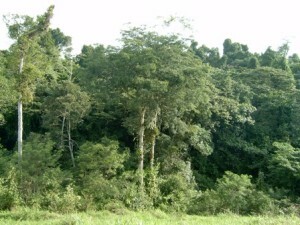THE agricultural frontier it represents a more or less defined area of expansion of agricultural activities over the natural environment. Generally, it is in this zone that cases of illegal deforestation and conflicts involving the possession and use of land over the so-called vacant lands, natural spaces belonging to the union and not delimited by legal properties, serving as housing for indigenous people and traditional and family communities.
The location of this expansion area has changed throughout history. During the period after the discovery, when the Portuguese Crown decided to implement agricultural production in the country, the coastal area composed predominantly of the Atlantic Forest was constituted, then, as the first agricultural frontier Brazilian.
Later, especially throughout the 20th century, agricultural practices expanded more intensely into the interior of the national territory, due to both the March to the West policy, implemented by Getúlio Vargas, and the import substitution policy promoted by Juscelino Kubitschek.
In the meantime, the expansion region became the Center-West region, with migratory fronts of producers coming from the South and Southeast of Brazil. The result was the transformation of states such as Goiás, Mato Grosso and Mato Grosso do Sul into veritable granaries, mainly grain producers, with an emphasis on export-oriented soybeans. In addition, there was also intensive devastation of the Cerrado, which currently has less than 20% of its original reserves.
Currently, the Brazilian agricultural frontier is towards the North of the country, registering a large amount of conflicts in the Forest area. Amazon, with emphasis on the case of Doroth Stang, an American activist naturalized Brazilian who was murdered by farmers in the city of Anapu (PAN).
Do not stop now... There's more after the advertising ;)
Generally speaking, the agricultural frontier is usually configured through a expansion front, followed by a pioneer front. The latter is responsible for consolidating the agricultural activity in a given region in a more complete way. Subsequently, these activities undergo a stage of productive modernization.
The agricultural expansion front is usually carried out by squatters, who start a cultivation process on the vacant lands, involving family and subsistence agriculture, with production, in many cases, organized in cooperatives.
However, this expansion front is usually quickly succeeded by a pioneering front, represented by large farmers, who, through the process of land grabbing (falsification of documents and property titles), claim that they are the owners of the land used by squatters and even groups indigenous peoples.
From territorial disputes involving indigenous people and, mainly, squatters and squatters, the main conflicts in the countryside, with recurrent murders and the formation of so-called “lawless lands”. In the meantime, activities involving illegal removal and sale of wood from forest reserves are intensified.
Therefore, the main need of the rural environment currently involves public action that actually solves the problems of land use in Brazil, controlling conflicts and inspecting frauds, given that more than half of the land tenure documents in the country are illegal, according to a survey carried out by geographer Ariovaldo Umbelino de Oliveira.
By Rodolfo Alves Pena
Graduated in Geography
Would you like to reference this text in a school or academic work? Look:
PENA, Rodolfo F. Alves. "Agricultural Frontier of Brazil"; Brazil School. Available in: https://brasilescola.uol.com.br/brasil/fronteira-agricola-brasil.htm. Accessed on June 27, 2021.

